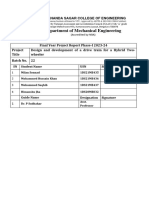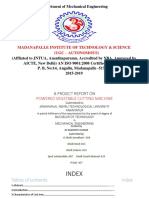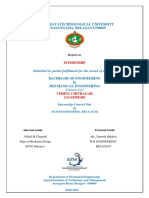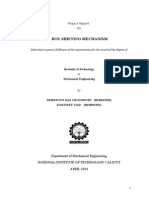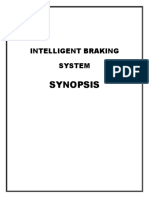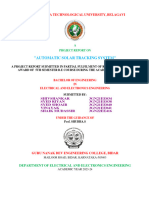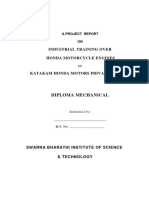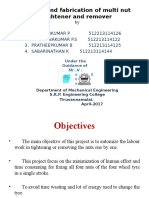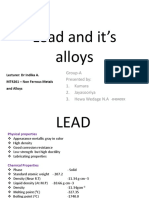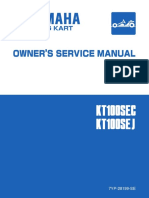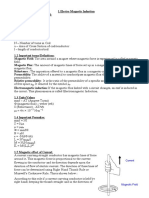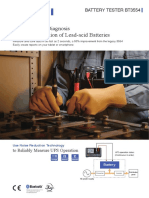0% found this document useful (0 votes)
395 views18 pagesRemote-Controlled Cleaning Vehicle
This document describes a remote-controlled floor cleaning and scrap collecting vehicle created by five students at Sri Venkateswara College of Engineering and Technology. The vehicle can be operated wirelessly using a remote control up to a range of 100-500 meters. It uses circuits and motors installed in the wheels to move in different directions as controlled remotely. The vehicle aims to reduce manual labor by automatically performing sweeping and scrap collecting tasks through control of a gripper arm attachment. The project aims to introduce automation to traditional scrap collecting systems used in industries.
Uploaded by
mantosh kumarCopyright
© © All Rights Reserved
We take content rights seriously. If you suspect this is your content, claim it here.
Available Formats
Download as DOCX, PDF, TXT or read online on Scribd
0% found this document useful (0 votes)
395 views18 pagesRemote-Controlled Cleaning Vehicle
This document describes a remote-controlled floor cleaning and scrap collecting vehicle created by five students at Sri Venkateswara College of Engineering and Technology. The vehicle can be operated wirelessly using a remote control up to a range of 100-500 meters. It uses circuits and motors installed in the wheels to move in different directions as controlled remotely. The vehicle aims to reduce manual labor by automatically performing sweeping and scrap collecting tasks through control of a gripper arm attachment. The project aims to introduce automation to traditional scrap collecting systems used in industries.
Uploaded by
mantosh kumarCopyright
© © All Rights Reserved
We take content rights seriously. If you suspect this is your content, claim it here.
Available Formats
Download as DOCX, PDF, TXT or read online on Scribd
/ 18







